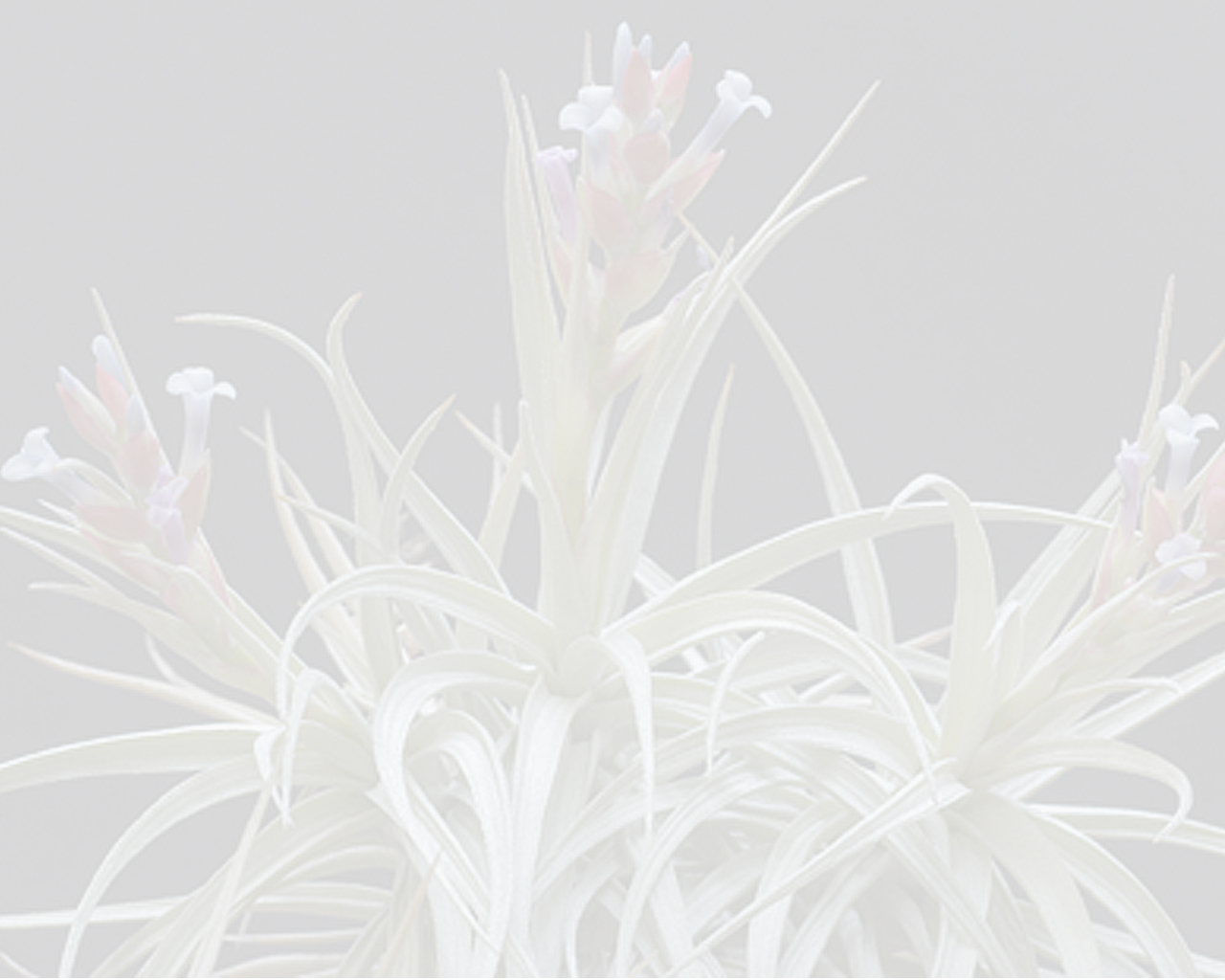Tillandsia ionochroma André ex Mez
(Nom. nov. pro Caraguata violacea André)
Literature references:
*move your mouse pointer over the page numbers to see comment
Comments:
- The type specimen of Tillandsia ionochroma (Mez 1896: 801) is the same as for Caraguata violacea André (André 1888: 6) collected in the south of Ecuador (Figs. 6 & 7). André (1889: 50) in the emended description of this species mentioned that the corolla is 2 cm long formed by a long and narrow tube surpassing the calyx and with oblong lobes 5 mm long provided with an acute apex. In plate 18a (André 1889: planche XVIII, A) there is an inflorescence with flowers emerging from the primary bracts and three drawings with the details of the flowers. In drawing 1 is the complete flower with connate petals, in drawing 2 is the open flower with connate petals and the details of the filaments and anthers, and in drawing 3 the details of the ovary, filaments and stigma. The drawings in the book of André (1889) probably have been made by an artist not familiar with the characters of the plants and are generally somewhat stylized. The same happens with the illustration of Caraguata pulchella André (André 1888: 5) in that book, nowadays Racinaea pulchella (André) Gouda & Manzan. (Gouda & Manzanares 2006: 153), with connate petals, for this reason we must use André’s illustrations with reservation. In figure 230 F–H of Smith & Downs (1977: 748) that is based on André (1889), also the petals are depicted as connate. Another striking feature in the description of Caraguata violacea are the violet petals (hence the specific epithet!). In the genus Guzmania Ruiz & Pav. (Ruiz & Pavón 1802: 37) to which Caraguata today is a synonym, the violet colour of the petals is absent, also for G. poortmanii (André) André ex Mez (Mez 1896: 922) (syn. Thecophyllum poortmanii André, André 1889: 108) where in fact the violet flowers are referring likely to the violet primary bracts. Jørgensen & León Yánez (1999: 35) mention that possibly all the collections ascribed to André made in Loja could actually be Poortman’s ones. There are several examples of species such as Puya eryngioides André (André 1888: 5) (Manzanares 2002: 16), Guzmania poortmanii, Pitcairnia poortmanii André (André 1888: 4), Racinaea seemannii (Baker) M.A. Spencer & L.B. Sm. (Baker 1889: 153, Spencer & Smith 1993: 157) and the mentioned Tillandsia ionochroma. Most of these species have been found in the provinces of Loja and Azuay, while André travelled from Colombia to Ecuador passing through Quito and Riobamba cities in the Ecuadorian highlands and then moved to Guayaquil, a city located on the coast of the Pacific Ocean (Manzanares 2002: 16). Possibly much of the material examined was already preserved and he did not observe living material, which led him to classify Tillandsia ionochroma as well as Racinaea seemannii in the genus Caraguata. —See Manzanares & Till 2022 p. 31-32

